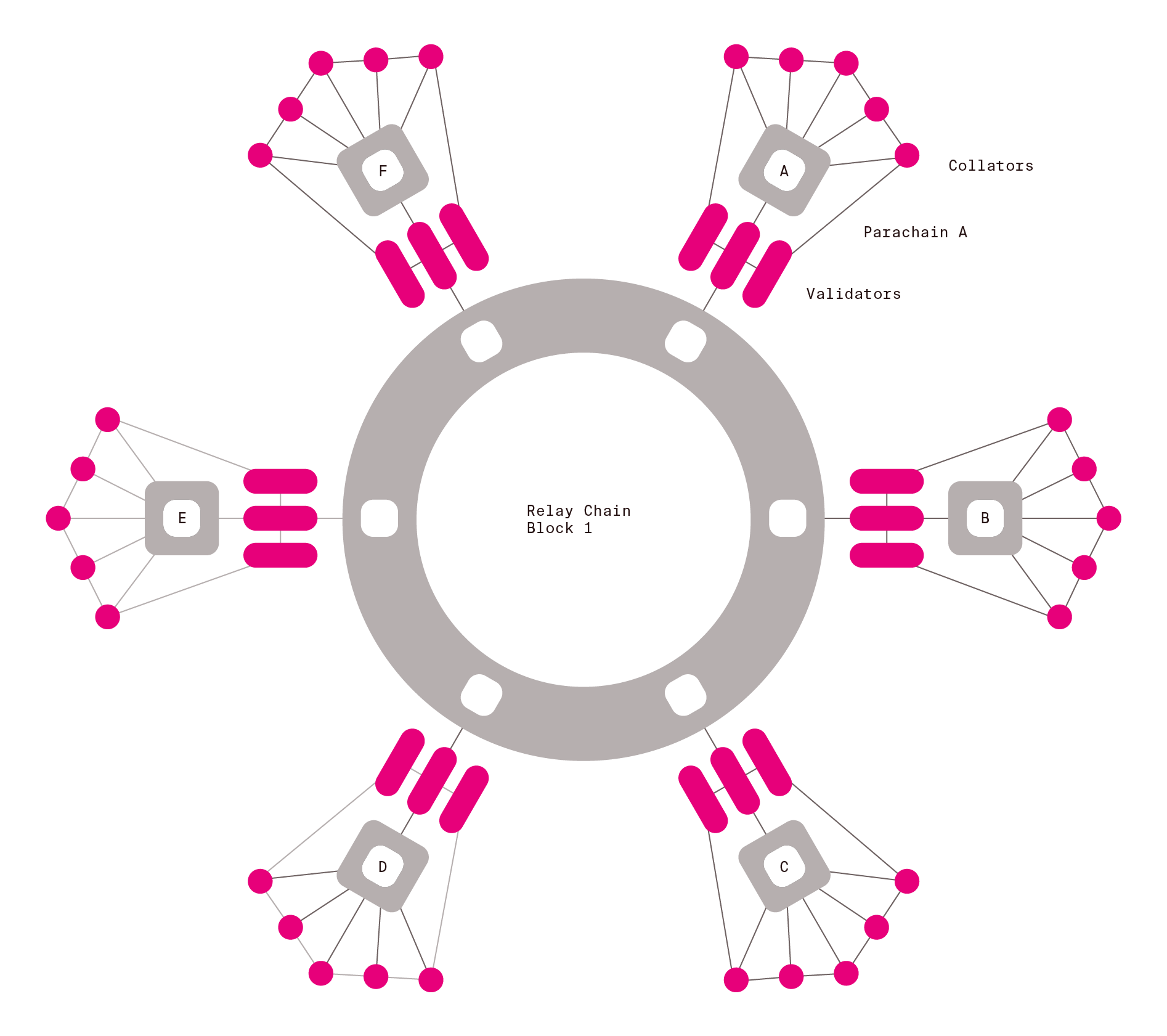Parachains are Layer-1 blockchains running in parallel on both the Polkadot and Kusama networks in the Polkadot ecosystem. As mentioned in the Polkadot whitepaper, Parachains are the last part of Polkadot’s core functionality. Parachains are the structures that will enable Polkadot to realize its scalable multi-chain structure. Sharing the security of the Polkadot network, these blockchains are connected to the Relay Chain, the heart of Polkadot.
Parachains connected to and secured by the Relay Chain share Polkadot’s security, scalability, interoperability, and governance. Polkadot’s cross-chain composability opens up a range of new use cases and applications that allow sending data or assets between Parachains. Parachains can be connected to external networks such as Bitcoin and Ethereum using bridges.

The Polkadot network consists of Parachains, Collators, Bridges, Validators, and Nominators built on the central chain called the Relay Chain. Parachains are where projects that run and serve on Polkadot are located. These locations are called Parachain Slots. Parachain Slots work like Polkadot's cores, and each can run a different transaction.
Parathreads
Parathreads were created so that Parachains could benefit from the security of the Polkadot network without the need to lease a dedicated Parachain Slot. The Parathread model is particularly suitable for the projects that do not require constant connection to the network. Blockchains in Polkadot can switch between Parachains and Parathreads depending on their needs and the availability of Parachain Slots in the Relay Chain.
Parachain Slot Auctions
A project aiming to work on Polkadot needs a Parachain Slot. Parachain slot auctions, called Candle Auctions, are held to determine projects that will work in the Parachain Slots on Polkadot. Once these auctions begin, every project on the network is free to submit bids to the Relay Chain.


